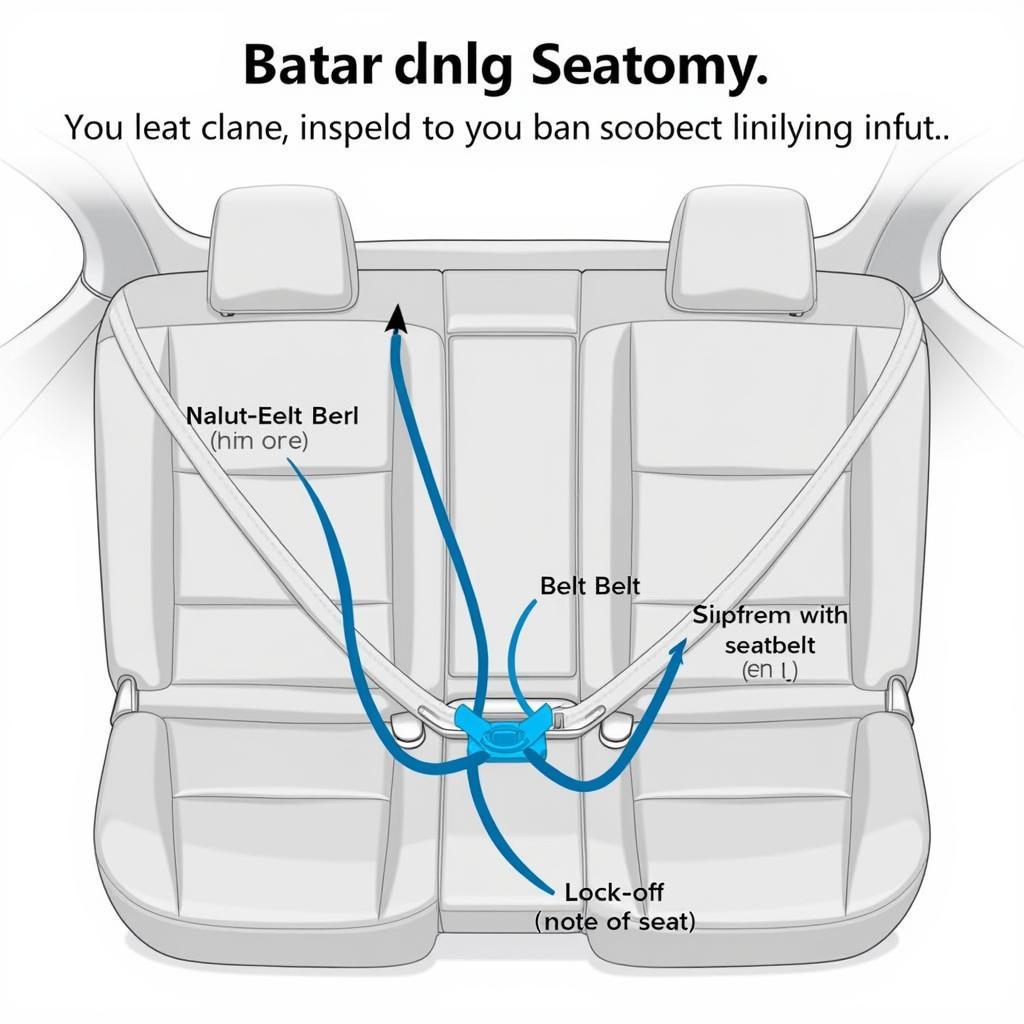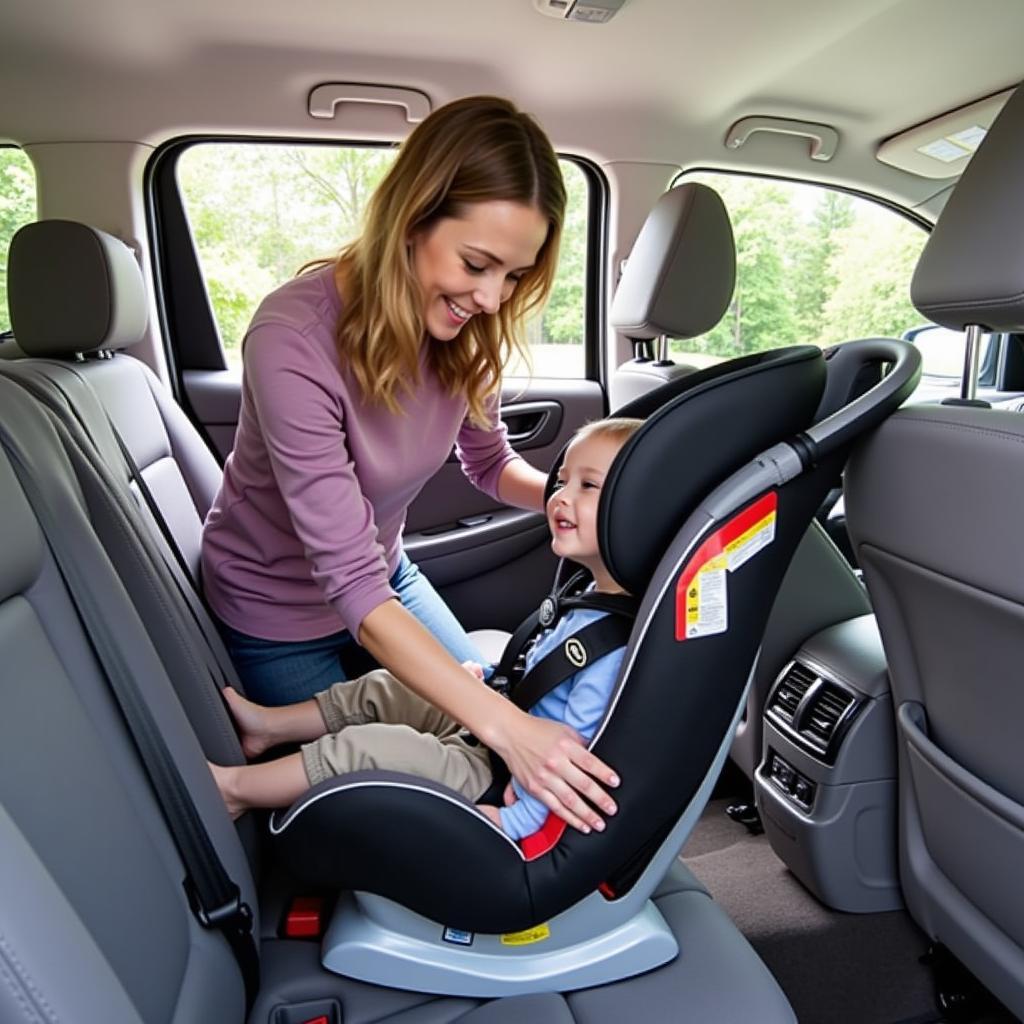Ensuring your infant’s safety is paramount, and correctly installing their car seat is the first step. This guide provides comprehensive instructions on How To Fix The Car Seat For Infant, covering various installation methods and common troubleshooting tips. A properly secured car seat is crucial for protecting your child in the event of a collision.
After securing the base, double-check the installation by trying to move the car seat at the belt path. If it moves more than an inch, it needs to be tightened. Having a correctly installed car seat gives you peace of mind knowing your little one is safe and secure. Check out this helpful resource if you’re experiencing issues with your car seat isu fix base.
Understanding Car Seat Types and Installation Methods
There are two main types of infant car seats: rear-facing only and convertible. Rear-facing-only seats are designed specifically for infants and must be installed facing the rear of the vehicle. Convertible seats can be used both rear-facing and forward-facing, offering more flexibility as your child grows. Both types can be installed using either the vehicle’s seat belt or the LATCH system (Lower Anchors and Tethers for Children).
Understanding your car seat’s specific features is vital. Each model has its own nuances. Refer to your car seat manual for specific instructions. Securely installing a car seat is an essential part of protecting your baby.
Installing with the Vehicle Seat Belt
If using the vehicle’s seat belt, route the belt through the designated belt path on the car seat, ensuring it is threaded correctly. Buckle the seat belt and pull it tightly to secure the car seat. The seat should not move more than one inch from side to side or front to back at the belt path. Some seats have built-in lock-offs to help tighten the belt. Consult your car seat manual for specific instructions. For more information on fixing side-to-side movement, see this article about car seat moves from side to side fix.
Installing with the LATCH System
The LATCH system uses lower anchors and a tether anchor to secure the car seat. Locate the lower anchors in your vehicle’s back seat and attach the car seat’s lower connectors to them. Then, find the tether anchor, usually on the back of the seat or in the cargo area, and attach the tether strap. Tighten both the lower connectors and the tether strap until the car seat is snug.
Remember, proper installation is crucial. A loose car seat can significantly increase the risk of injury in a crash. Double-checking your work ensures your baby’s safety.
 Infant Car Seat Installation with Seatbelt
Infant Car Seat Installation with Seatbelt
Common Problems and Solutions
Sometimes, despite our best efforts, problems can arise during installation. Here are some common issues and how to address them:
- Car Seat Moves Too Much: Double-check that the seat belt or LATCH straps are tightened correctly. Retry the installation, ensuring the car seat is pushed firmly into the vehicle’s seat. If the movement persists, try a different seating position in your car.
- Difficult to Tighten the Straps: Using your body weight to lean into the car seat while tightening the straps can provide additional leverage. For persistent difficulties, explore resources like cybex car seat z fix plus.
- LATCH Connectors Don’t Reach: Some vehicles have lower anchors that are spaced differently. If the connectors don’t reach, try using the seat belt installation method. There’s also information available about the cybex aton 2 fix car seat base.
- Tether Strap Too Short: If the tether strap doesn’t reach the anchor point, consult your vehicle and car seat manuals for alternative routing options.
“Always ensure the car seat is installed tightly and doesn’t move more than an inch at the belt path,” advises certified Child Passenger Safety Technician, Sarah Miller.
 Checking Car Seat Installation Tightness
Checking Car Seat Installation Tightness
Expert Tips for a Secure Installation
“Using the correct installation method for your vehicle and car seat is essential,” recommends John Davis, a veteran automotive engineer. “Always consult both the car seat and vehicle manuals for specific instructions and recommendations.”
“Never install a car seat in the front seat if the vehicle has a passenger-side airbag,” warns Maria Rodriguez, a pediatrician specializing in child safety. “The force of a deploying airbag can be dangerous for infants.” Learn more about car seat safety considerations with resources like how fix child care before wave.
Conclusion
Properly installing a car seat for your infant is a critical step in ensuring their safety. By following the steps outlined in this guide and consulting your car seat and vehicle manuals, you can confidently secure your child’s car seat. Remember to always double-check your installation to ensure the seat is snug and doesn’t move excessively. For further assistance, please contact us at AutoTipPro: +1 (641) 206-8880, 500 N St Mary’s St, San Antonio, TX 78205, United States.







Leave a Reply